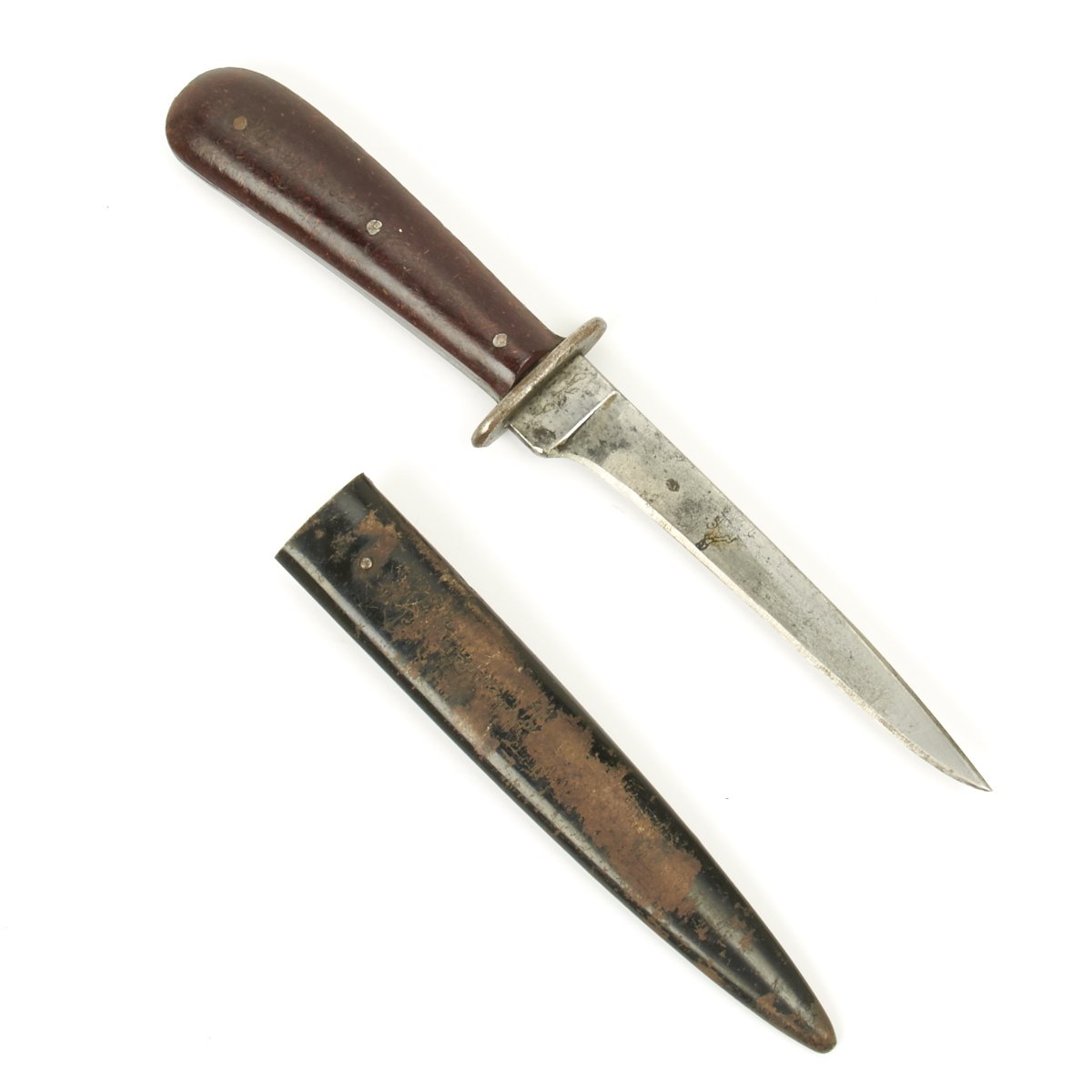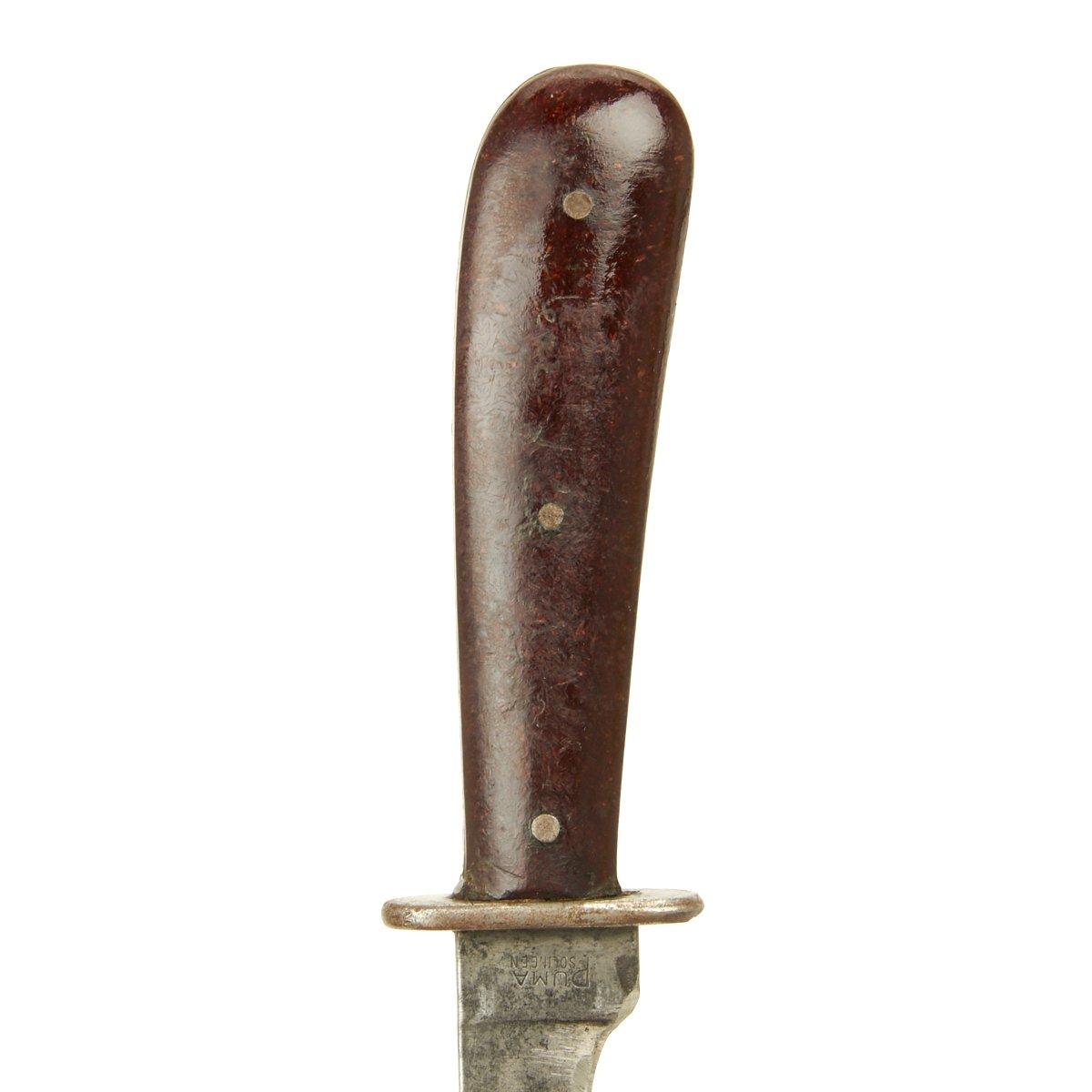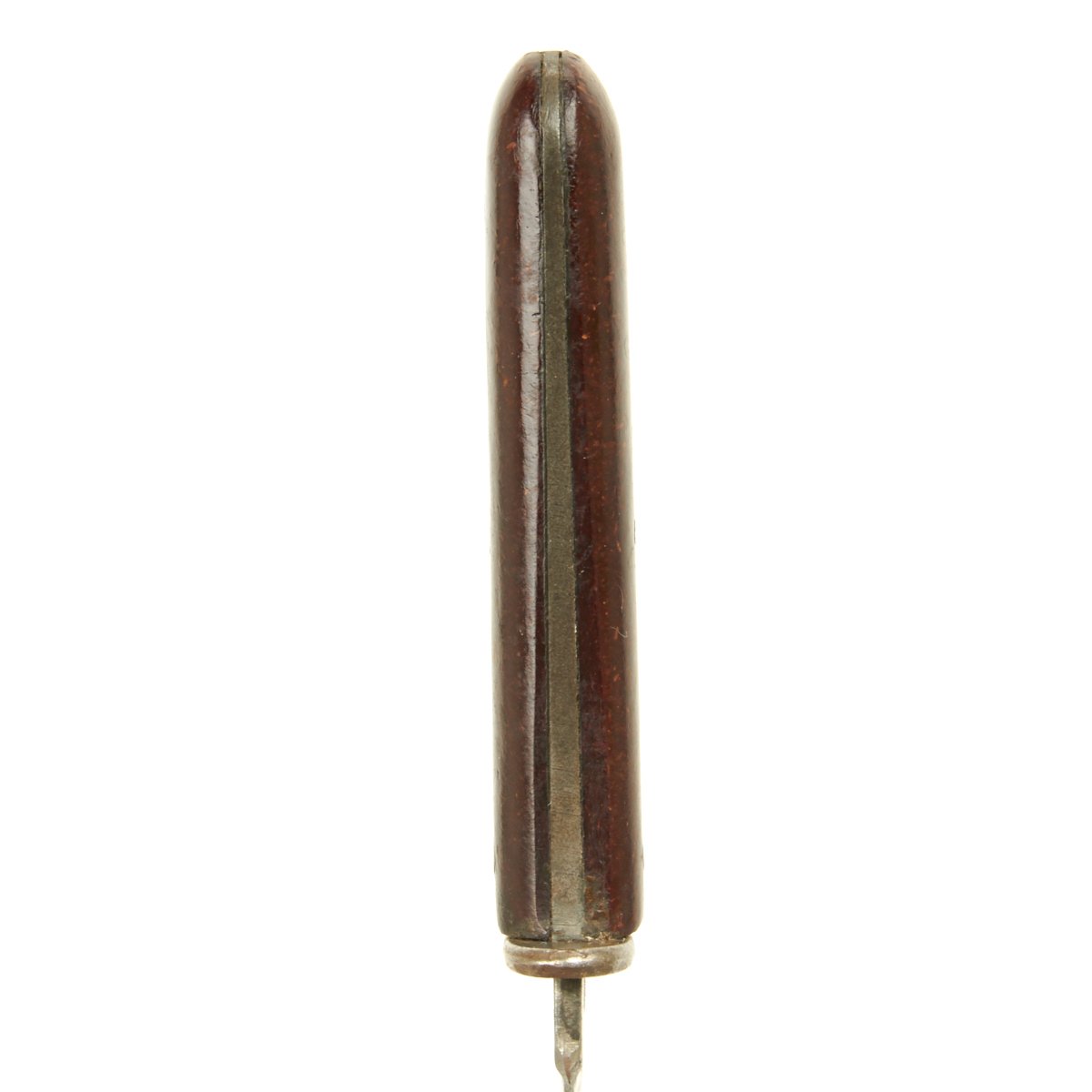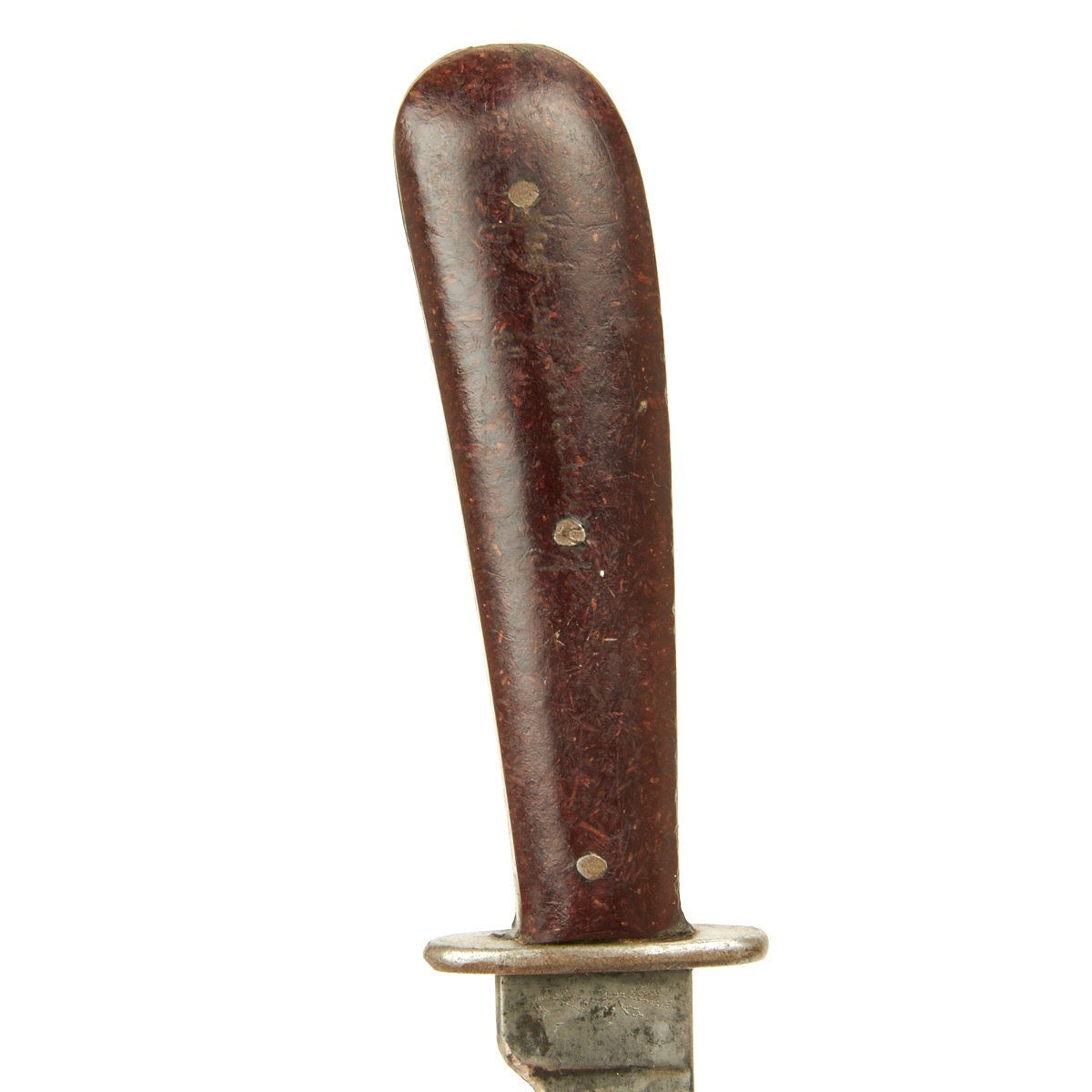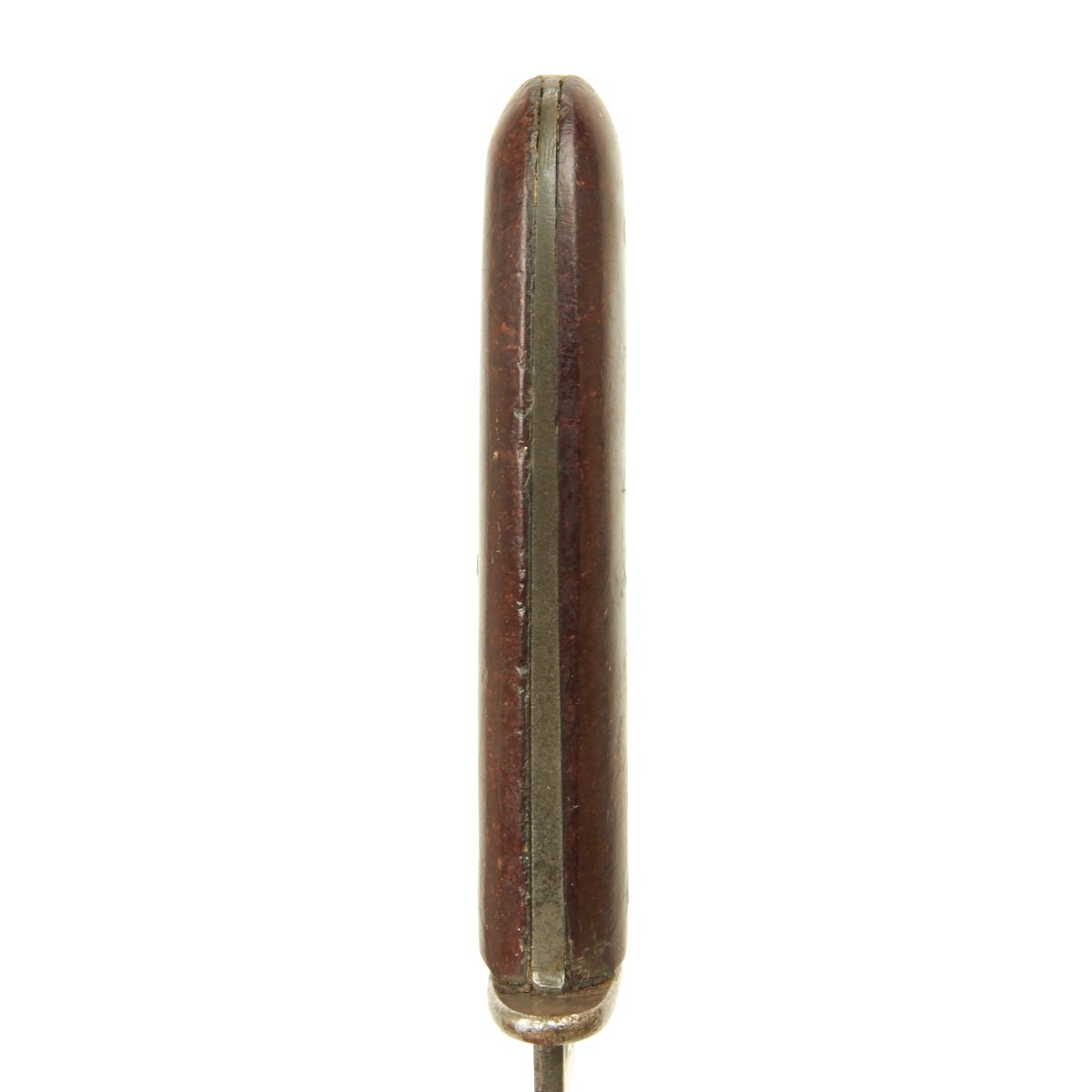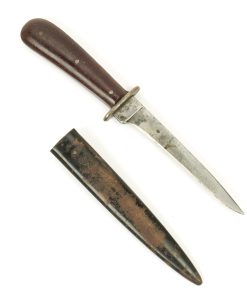Original German WWII Field Modified Trench Knife with Boot Scabbard by PUMA – Bakelite Handle Original Items
$ 295,00 $ 118,00
Original Item: Only One Available. This is a fantastic example of the rare German WWII boot knife with clip back steel scabbard. It is made in typical World War II “trench knife” style, with a 5 ¾” blade and an overall length of 10 inches. This particular example has been field-modified to have a “boning knife” shape for use in the field. The knife has contoured bakelite grip scales, retained with three pins. The hilt has a small oval cross guard and the blade is stamped on the Ricasso with the maker PUMA of SOLINGEN. Known as the “City of Blades”, Solingen is a city in western Germany with a blade-making history going back centuries. PUMA is a well-known brand from the city, founded in 1796 and still in existence today.
The metal scabbard is black enameled with rear spring clip; both in good condition for their age. Scabbard still has about 65% of the original finish. The blade itself has been ground down significantly to alter the shape to a “boning knife” type knife, and is still very sharp. The bakelite grip scales show some wear from use, but have no cracks or chips.
History of the German WWII Trench Knife:
In hand-to-hand combat, the edge went to the combatant who was better trained and adequately armed. The well trained professional soldier of the Third Reich saw to it that he had the edge by carrying a close combat knife (also referred to as a trench knife, which was the name given to it during the trench warfare of World War I). Close combat knives were a basic issue item and were issued to the individual. The basic issue knife was constructed of a one piece blade and tang, fitted with two wood grips normally riveted in three places for added strength. The blade was double edged, with the second edge running halfway up the top portion of the blade. A short metal guard provided the necessary weight in arriving at a closely balanced knife. The sheath was constructed of seamless drawn steel tubing painted black. A spring clip was normally riveted to the back, allowing the wearer to fit it to his belt, clip it to his boot, or some other place on his uniform which would allow ready access.
Fast Shipping with Professional Packaging
Thanks to our longstanding association with UPS FedEx DHL, and other major international carriers, we are able to provide a range of shipping options. Our warehouse staff is expertly trained and will wrap your products according to our exact and precise specifications. Prior to shipping, your goods will be thoroughly examined and securely secured. We ship to thousands clients each day across multiple countries. This shows how we're dedicated to be the largest retailer on the internet. Warehouses and distribution centres can be located throughout Europe as well as the USA.
Note: Orders with more than one item will be assigned a processing date depending on the item.
Before shipping before shipping, we'll conduct a thorough inspection of the items you have ordered. Today, the majority of orders will be delivered within 48 hours. The delivery time will be between 3-7 days.
Returns
The stock is dynamic and we cannot completely manage it because multiple stakeholders are involved, including our factory and warehouse. So the actual stock may alter at any time. It's possible that you may not receive your order once the order has been made.
Our policy is valid for a period of 30 days. If you don't receive the product within 30 days, we are not able to issue a refund or an exchange.
You can only return an item if it is unused and in the same state as the day you received it. You must have the item in its original packaging.
Related products
Uncategorized
Uncategorized
Uncategorized
Armoured Fighting Vehicles of the World: AFVs of World War One (Hardcover Book) New Made Items
Uncategorized
Uncategorized
Uncategorized
Uncategorized
Uncategorized
Uncategorized
Uncategorized
Uncategorized
Angolan Rebel 1970s era 60mm Inert Display Mortar from Angolan Civil War Original Items
Uncategorized
Uncategorized
Uncategorized
Uncategorized
Uncategorized
Armored Burgonet Helmet & Polearm from Scottish Castle Leith Hall Circa 1700 Original Items
